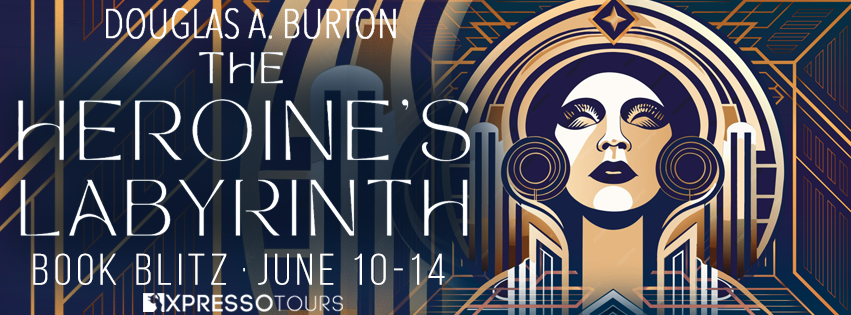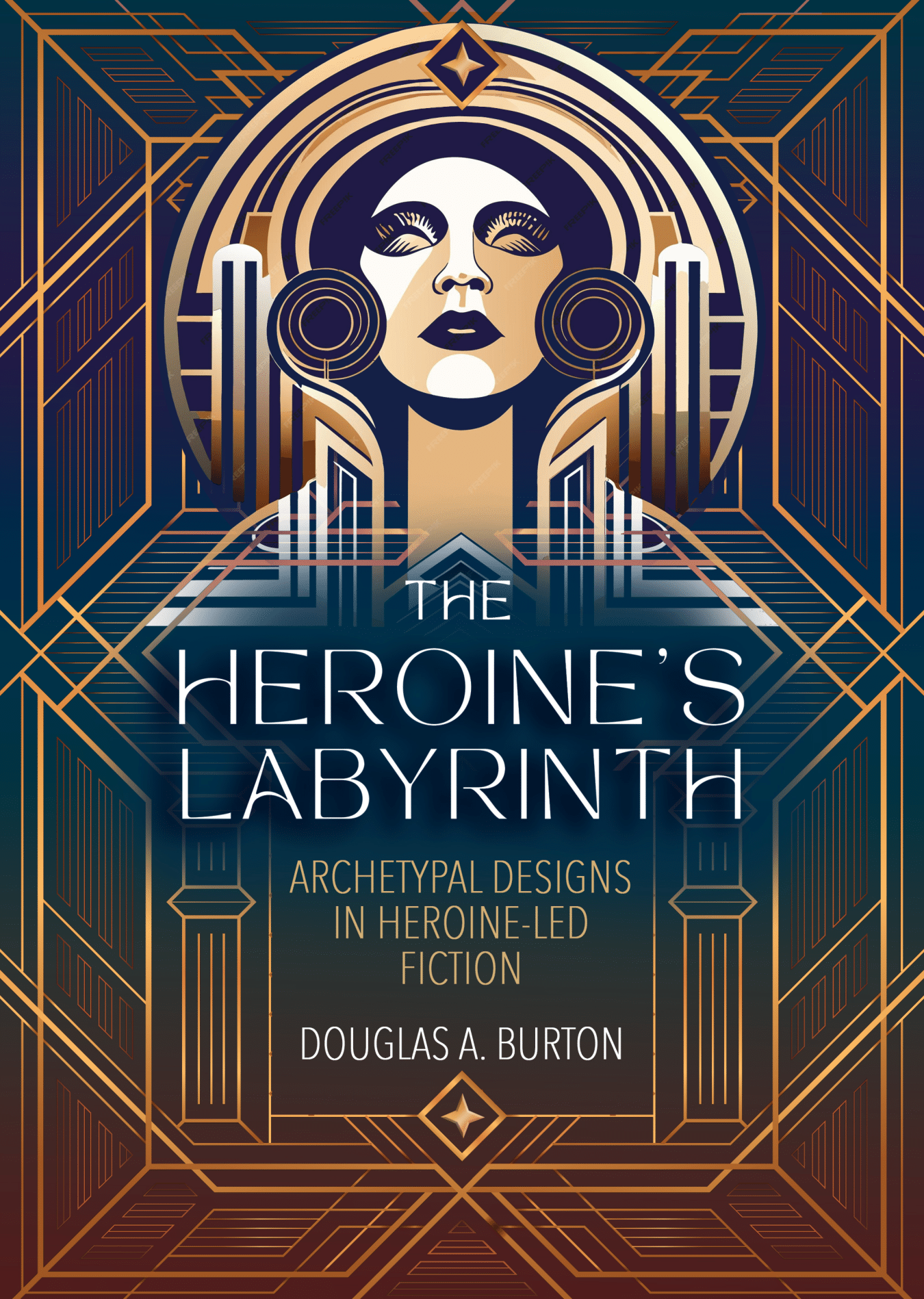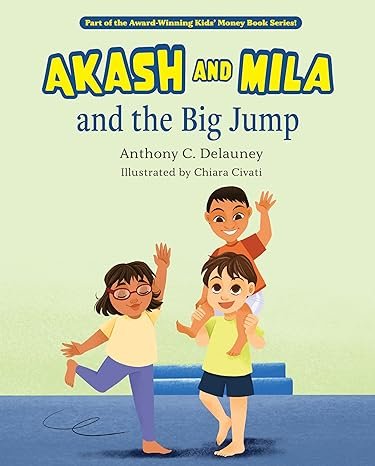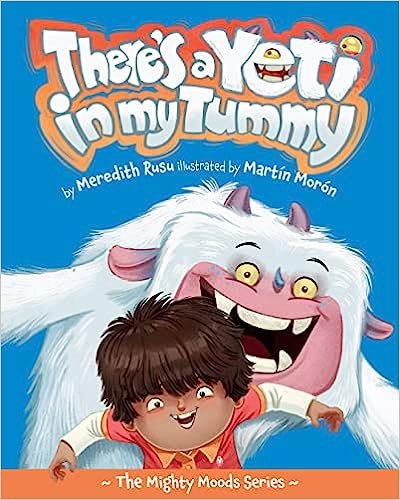Spotlight: The Heroine’s Labyrinth by Douglas A. Burton
/Publication date: March 24th 2024
Genres: Non-fiction
Synopsis:
For decades, the hero’s journey has had a major influence on storytelling and story structure. Now, Douglas A. Burton presents a groundbreaking new paradigm for writers everywhere. Sourced entirely from heroine-led fiction—a stunning new narrative form takes shape with familiar archetypes in a never before seen outline. Burton adds something original and fascinating to the world of storytelling. Discover the dynamism of story, conflict, character development, archetypes, and heroism in an entirely new light. From myth to literature, from TV to film, The Heroine’s Labyrinth explores recurrent themes and patterns modeled by heroic women in fiction. The labyrinth model has the potential to turn conventional understanding of story structure upside down.
Inside, you’ll encounter 18 archetypal designs that form a distinctive narrative arc, each one rich with profound insights and powerful new perspectives. Discover how stories are constructed through powerful archetypes such as the Masked Minotaur, the Sacred Fire, the Beast as Ally, the Poisoned Apple, and more. Novelists, screenwriters, RPG gamers, and memoirists will gain waves of creative inspiration while reading The Heroine’s Labyrinth. You won’t be able to put it down.
Excerpt
The Heroine’s Labyrinth is a book for writers—novelists, screenwriters, role players, memoirists—anyone who loves and cares about storytelling. The narrative concepts within this book are not variations of the hero’s journey; they are not a response to any criticism of heroines, nor are they prescriptive notions of my own design. The heroine’s labyrinth is a model of the archetypal power that exists now, has always existed, and will continue to exist for as long as there’s still a heroine to write about.
In 2018, I was deep into writing my first novel, Far Away Bird. The historical fiction novel centered around the real life of Empress Theodora. Her tale included historical and biographical details that any novelist needed to follow to capture the truth and essence of her character. However, to help me organize Empress Theodora’s story into a workable structure, like many writers, I turned to the hero’s journey. But midway through the novel, I came to the most frustrating conclusion possible—that the life of my beloved empress and leading heroine did not follow the hero’s journey. As a full believer in the hero’s journey, this was a devastating realization. So, begrudgingly, I did what seemed to be the next and most logical step in the writing process.
I searched for the feminine equivalent of the hero’s journey.
In The Art of Storytelling: From Parents to Professionals, Professor Hannah B. Harvey presents a lecture on fairy tales, where she discusses the origins and mythology of Little Red Riding Hood. The common ingredients for the story are an innocent girl, a masculine beast in disguise, and an attempt by the beast to eat the girl. Professor Harvey explains that Little Red Riding Hood is actually a fable about budding womanhood and a cautionary tale about the life choices of a young heroine. I immediately realized that this scenario had vast archetypal power because of its recurrent themes throughout a broad spectrum of stories. Suddenly, we spot Little Red Riding Hood reborn as Dorothy Gale, Buffy the Vampire Slayer, Clarice Starling, or Bella Swan. But the Little Red Riding Hood tropes and scenarios didn’t appear anywhere in the hero’s journey. Therefore, Professor Harvey’s interpretation and analysis gave me the exact framework for the narrative model I searched for—a heroine with a thousand faces.
I decided to reorganize all my notes on heroines—not as a derivative of the hero’s journey, not as a criticism of heroines, but as a distinctive stand-alone monomyth found in stories. What I found changed my perspective and understanding of our countless heroines. And so, my desire to unlock the heroine’s secrets led me to write the one book I’d never found while writing my own heroine-centric novel.
The copious notes I collected during those years became the foundation of this book. If it helped me, then it can help you. The Heroine’s Labyrinth is the final result of a life-long passion for storytelling, a personal fascination with archetypes, and an unexpected labor of love in understanding the journey of heroic women in our collective works of fiction. And dear writers, I can’t wait to share it all with you.
The Heroine’s Labyrinth differs from other books on the topic because of five storytelling guidelines.
1. The heroine is always sovereign, regardless of portrayal, historical period, or restrictive circumstances.
2. The primary focus is on the art of writing and storytelling.
3. The archetypal patterns and themes must be distinct and recurrent in heroine-centric stories.
4. We’ll approach story structure as intuitive, semi-sequential, and flexible rather than formulaic, linear, and fixed.
5. The heroine’s labyrinth does not invalidate nor diminish the hero’s journey.
The combination of these five guidelines delivers a distinctive and original take on heroine-centric stories and the art of storytelling. Many books that studied heroines veered away from the craft of writing. Other books approached feminine stories critically, perhaps discussing heroines more as they should be. However, as you’ll see, heroines as they are and, more importantly, heroines as they have always been are far more powerful, inspiring, and memorable.
Joseph Campbell himself said, “For the symbols of mythology are not manufactured; they cannot be ordered, invented, or permanently suppressed. They are spontaneous productions of the psyche, and each bears within it, undamaged, the germ power of its source.”
In other words, we cannot devise by preference what the heroine does on her own. As writers, we cannot tell the heroine what to do, how to act, or which virtues to model. Instead, we must listen, observe, and learn from her actions and choices. There is a constant heroine across culture and history, through myth and story, and she brings unique solutions and timeless archetypal wisdom to life’s challenges. The heroine’s story is our story. Her struggles are our struggles. And the wisdom she gains, she gains for us all.
Buy on Amazon Kindle | Paperback | Bookshop.org
About the Author
Douglas A. Burton is a novelist and storyteller whose various works emphasize heroic women in fiction. Burton’s debut historical novel, Far Away Bird, brought Byzantine Empress Theodora to life through an intimate biographical account. The novel collected numerous awards including gold medals for the IBPA’s Best New Voice in Fiction, Readers’ Favorite Historical Personage, and eLit’s Best Historical Fiction eBook. Far Away Bird was also a finalist for the Montaigne Medal (Eric Hoffer Book Award) and Screencraft’s Cinematic Book competition. Burton’s newest book, The Heroine’s Labyrinth, is a nonfiction writing craft book that offers a paradigm shift for story structure. Presented as a distinctive counterpart to the well-trodden hero’s journey, Burton explores the unique narrative arc and archetypal designs that recur in heroine-led fiction. He currently lives in Austin, TX with his wonderful wife, Crystal, and two energetic boys, Jacob and Lucas.
Connect:
https://www.facebook.com/douglasaburtonauthor/
https://www.goodreads.com/author/show/19627491.Douglas_A_Burton


















































